Tož uměli to 
Torture in the Middle Ages
Categories: What didn't fit elsewhere
During the Dark Ages, torture was used in most cases to punish the guilty. Whether it was traitors, spies or thieves, torture was the most common method of punishment. Serious criminals were sentenced to death, preceded by a particularly painful foreplay...
If we were to go into a description of all the torture methods, we could certainly fill a couple of hundred pages. It's itchy to think of the cruelty that prevailed during the Middle Ages. So in a few lines we will get acquainted with the most piquant ones, including the famous Judas Chair.
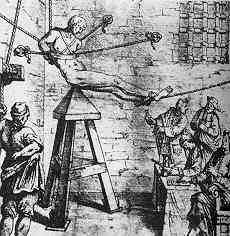
In literature, you can also encounter it under the name of Judas' cradle. It was supposedly used during the Spanish Inquisition. However, it is believed to have been used for torture much earlier. It looks like a seat formed into a pyramid. The victim was placed on the seat with the tip intersecting the private parts. A belt or rope was then placed on top to secure it. The tortured person was then slowly "lowered" onto the spike, which was very painful and few survived.
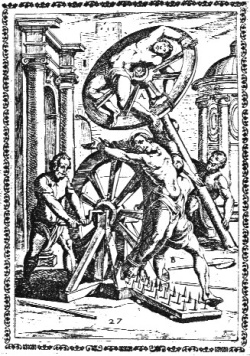
Nor does the torture wheel deserve to go unnoticed. You could see this mechanism in the film May. It was designed for particularly hated criminals. The wheel originated in Greece and quickly spread to Germany, England, France, Russia and Sweden. The device consists, as the name suggests, of a wheel that has many spokes. The victim's limbs were smashed with an iron hammer to allow them to become entangled in the wheel. The victim, already entangled, was then placed on a high pole to await death. It often became food for birds.
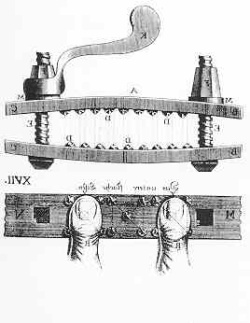
Another tool with a very painful effect is the finger shredder. The process was carried out by pushing the victim's fingers into the tool and slowly crushing them by turning the crank. The more the person denied, the more the torturer turned the crank.
During the Spanish Inquisition, the so-called heretic's fork was also used. The instrument consists of two forks placed opposite each other. These penetrated the chin on one side and the chest on the other. As usual, this instrument did not threaten vital organs, since the aim was not to kill but to torture.
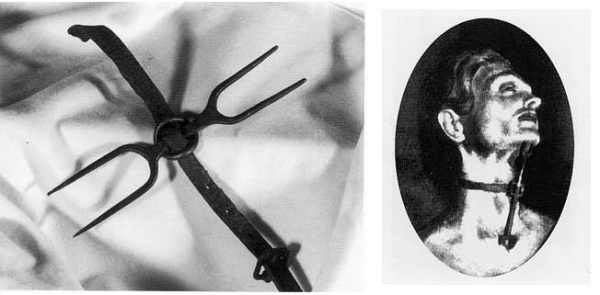
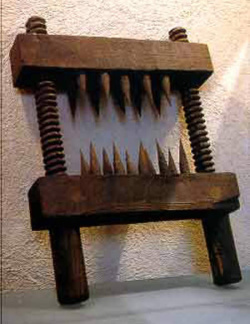
In the same period, the knee splitter was also used for torture. Despite its name, however, it was also used to deform other parts of the body: elbows and virtually most joints. The mechanism was again very simple. The torturer turned the crank and the teeth, located opposite each other, were slowly brought closer. Sometimes the prongs were heated.
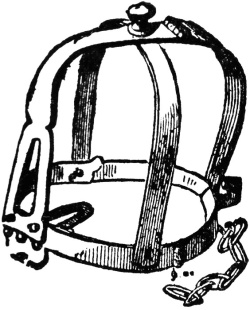
Especially for women, a mask was invented, which was put on the head. It was rewarded to those who caused disturbances between neighbours, gossiped or lied. As an added bonus, mocking objects were attached to the mask. A bell was placed at the back so people could hear the beast approaching.
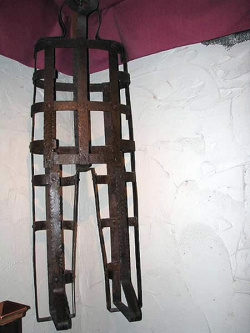
Not even particularly obese people had it easy in the Middle Ages. They used to be locked in a so-called torture coffin, where they stayed for several weeks. They were deliberately made smaller to make them as comfortable as possible. The torture was carried out in the presence of the public. Basically, you could say that it was a medieval cinema, but instead of a screen, people watched the coffin. It was especially cruel when the torturers put it in the sun and released animals on the helpless victim, which devoured it alive.
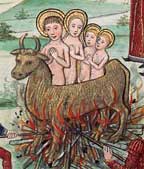
The bull-based method of torture dates back to ancient Greece. The tyrant Perillos devised a cruel death penalty for particularly serious criminals. He stuffed a man into the body of a bull and then flooded it. This literally boiled the victim. The victim's screams sounded like those of an angry bull. The whole process was not without an audience. This method of torture was also used in the Middle Ages.
Other cruel torture methods included the famous scrape, boiling the victim in water, pouring water over the head that slowly froze or burning. It's astonishing what people have come up with...
http://www.medieval-castles.org/
http://www.onelargeprawn.co.za/
You can search for artefacts from this period using our metal detectors.
The article is included in categories:
Post
Škoda že se mučení nepraktikuje i dnes- hned by ubylo kriminálníků 
Zajímavý článek, díky za něj:-).Chápu, že jde jen o překlad, ale stejně je zvláštní, že pár věcí tam neuváděli:-)
Strapado, železný osel, obligátní železná panna...
Dovolím si ale opravit úvod článku - mučení se používalo už při vyšetřovací fázi (v té šlo samozřejmě o donucení k přiznání se k činu, nebo k vyznání podrobností o činu, či udání kompliců - použité metody pak samozřejmě neměly způsobovat smrt, ovšem jako životní pojistku bych to nebral:-D) a následný trest potom mohl být zostřen ještě mučením (typicky trhání masa rožhavenými kleštěmi, vplétání do kola, trhání koňmi atp).
zdravím  bylo tam více mučících metod, ale to bych musela napsat knížku
bylo tam více mučících metod, ale to bych musela napsat knížku  do článku jsem se snažila dát, co jsem uznala za vhodné
do článku jsem se snažila dát, co jsem uznala za vhodné 
Viki,velmi zajimave tema..a dost dobre popsane v knize M.Monestiera Historie trestu smrti,vrele doporucuji vsem,co ji jeste necetli a koho by zajimalo treba to,ktere nabozenstvi si v muceni primo uchylacky libovalo.
Pěkné a zajímavé 
Zajímavý článek, hned bych použila některé metody pro pedofily, násilníky a vrahy.
zajímavý

Ahoj,znáte tento středověky trest mučení jen pro ženy? Odsouzená se svlékla,ruce se jí daly od sebe stejně tak nohy a spoutaly. Potom přišel kat silou jí roztáhl spodek do ní ji strčil krysu nebo potkana a spodek jí pak zašil. AU 
















